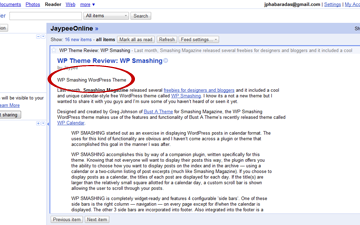For most small businesses, SEO is expensive. It takes time and dollars that many don’t have to spare, especially for an investment that yields a return roughly 3-5 months later (depending on the competitiveness of the industry).
For those businesses who are able to muster up a few bucks and set off on a journey to continuous web traffic and increased sales in the near future, I’d like to share a fairly simple way to build quality backlinks to your website. It’s called guest blogging.
Why Backlinks?
Amongst the many things that SEO companies do, backlink acquisition is the bread and butter of any SEO campaign. By most, I mean 98% of them (my guess, of course). A backlink is a hyperlink on another website that points to your website. They increase your domain’s (URL) strength which has a direct correlation with your website’s rankings. The stronger your domain becomes, the higher you’ll rank for your target keywords.
Years ago, a backlink from any website had the ability to increase your domain’s strength and authority. Now that search engines are much smarter, only backlinks from relevant, industry-related websites are beneficial. For example, if your business sells area rugs, backlinks from home improvement and interior design websites would be perfect.
Why You Should Start Guest Blogging
Guest blogging is writing and contributing content to other websites in your industry or niche. By hyperlinking the content back to your website, you’re able to secure a backlink. Moreover, guest blogging for websites, with a huge following, is a great way to increase your brand awareness and direct viewers back to your website.
Now that you know what guest blogging is along with the benefits of it, here’s how you can get started with guest blogging today.
1. Find and Vet Website’s That Accept Guest Posts
The first thing you’ll have to do is find websites that accept guest posts. You can easily do this by searching Google using the following search queries. Replace keyword with your industry or niche. For example, if you’re a video producer, your search query could be: video “submit a guest post”.
- keyword “submit a guest post”
- keyword “guest post”
- keyword “guest post by”
- keyword “accepting guest posts”
- keyword “guest post guidelines”
Once you’ve located the websites, I’d suggest adding them to a spreadsheet for record-keeping and tracking purposes. The next step is to make sure that they’re quality websites. By quality, I mean websites that aren’t spammy and are relevant to your niche. As an SEO specialist, here are the 3 primary things that I’m looking for when vetting websites for guest blogging. Using the free version of the tools mentioned, you can do the same.
- Website Traffic: Insert the website’s URL into SEMrush to see an estimate of how much traffic it receives monthly. The goal here is make sure that the website is alive and being found. If the website isn’t receiving any traffic, cut it.
- Domain Authority: Install the MozBar Chrome extension to see how strong the website is on a scale of 1-100. Target website that have a score of 20 or above. While websites with a lower DA could be valuable, often times the value isn’t worth the time you’ll put into writing your article.
- Trust Flow: Insert the URL into Majestic to check the website’s trustworthiness, which is based on the quality of the links that point to it. Target websites with a TF of 10 or above.
2. Review Guest Blogging Guidelines
Now that you have a list of quality websites to write for, it’s time to review their guest blogging guidelines. The web page that populated when locating the websites via Google should have this information. If not, it’ll most likely have a link to it. The guidelines will let you know the following amongst other FAQs:
- What topics you can write about
- How many words your article needs to be
- Process for accepting or rejecting posts
- Amount of links allowed in articles
- When will your article be published
- How to submit your article
For SEO purposes, it’s better to write for websites that allow at least one “dofollow” rather than all “nofollow” links. A dofollow link is one that will increase your website’s strength or ranking ability.
3. Prepare and Submit Your Article
If the guest post guidelines work for you, the last step is simply writing and submitting your article. While this should be covered in the guidelines as well, be sure to review articles currently posted on the website’s blog to get a feel for the website’s writing style and tone, along with an idea of what kind of content the website audience prefers. Within your article, consider opportunities to link back to blogs on your website in addition to blogs on the website you’re writing for.
Because you’re a guest contributor, you’ll need a bio. A short 100-word paragraph detailing who you are and what you do should suffice. You should also include a link to your website’s home page in your bio.
In summary, guest blogging allows you to get your brand in front of audiences that are similar to yours while building backlinks to increase your website’s authority and influence for higher search engine rankings. Take advantage of these simple steps to help grow your business on the web.
This is a guest contribution by Jamichael Mitchell, a Charlotte SEO expert with nearly a decade of experience executing SEO campaigns for various businesses. He’s also the founder of TruRank Marketing, a digital marketing agency specializing primarily in search engine optimization. He regularly produces content for a variety of business and marketing blogs, focusing on online lead generation for small to midsize businesses.














